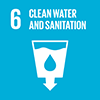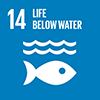June 2022 - You are accessing an old version of our website. The SDGs Voluntary Commitments have been migrated here: https://sdgs.un.org/partnerships
You will be redirected to the new Partnership Platform in 10 seconds.
June 2022 - You are accessing an old version of our website. The SDGs Voluntary Commitments have been migrated here: https://sdgs.un.org/partnerships
You will be redirected to the new Partnership Platform in 10 seconds.
Recycle oil residues in the production of concrete blocks with impermeability characteristics and large scale application in civil construction. The National Petroleum Agency states that Brazil annually produces about 1.1 billion liters of lubricating oil and less than 40% is collected for recycling. A good part of the remaining 60% will stop at some source of water contaminating and killing animals. One liter of oil has the potential of polluting about 1 000 000 liters of drinking water unfit for human consumption.
We all know of the destructive power of petroleum products, the oil residues when they come in contact with sea water undergo anaerobic reactions that eliminate methane gas contributing to the greenhouse effect and because they are denser, the oils do not mix with the water creating a film on the surface preventing the passage of light and the volatile exchange of gases killing aquatic communities. Encouraging selective collection and contributing to sustainable growth by preventing aquatic sources from suffering the ills of irrational use of mineral resources are the main objectives of this initiative. OIL Word is an institution that studies the world market of oil industries since 1958, they affirm that Brazil produces 9 billion liters of vegetable oils per year and less than 1% of the total produced is collected, unfortunately the rest will stop at environment reaching streams and rivers leaving a trail of pollution for hundreds of miles to the sea.
The laboratory studies and procedures counted on the collaboration of Cento Universitário Planalto (UNIPLAN) and had private resources from the project's founder. The final product of this initiative can be applied on a large scale in civil construction contributing in the same proportion with the fight against Water, Air and Terrestrial pollution.
The production of the blocks began in the second semester of 2018 with the purpose of presenting the results in Work Completion Course for graduation in Civil Engineering. Twenty cylindrical specimens and another 20 concrete blocks were produced, which were exposed to laboratory tests such as Compressive Strength, Slump Test, and Water Absorption. The requirements of the Brazilian Regulatory Standards in force as NBR 6136: 2014 requirements for the production of Concrete Blocks, NBR 12118: 2013 were met. Concrete Blocks Test Methods, NBR 5738: 2003 Molding and Curing Procedures of Bodies, test and NBR NM 67: 1998 Determination of consistency by the reduction of the cone body.
The compression tests reached an average of 2.7 MPa, according to NBR 6136: 2014 this value enables blocks to be used in buildings up to five floors classified as Class "C". The blocks produced in this work fit perfectly into this category by opening an infinite application for this product and providing the completion of a satisfactory result on the work performed. The cone truncation test, or simply "Slump Test" showed that the oil, in any proportion, directly interferes with the workability of the concrete. Apparently, the study of how oil can be incorporated by concrete into block production may seem strange to some people and not to others. Thinking of it, the final conclusions have been made. For the addition of 5% of oil residue in the concrete, each cement bag containing 50,000 kg will recycle exactly 2,500 liters of oil residue, with great polluting potential, and will also be certain that the water absorption characteristic has been altered, allowing greater protection of the concrete against damp systems. It is known that each liter of oil can render unfit for human consumption approximately 1.0 million liters of water, it then occurs in this situation that about 2.5 million liters of water have been saved from human neglect. That's 5% addition, in the case of a 15% addition, is 7,500 liters of recycled waste, preventing 7.5 million liters of water from being polluted, all with only 50,000 kg of cement. Any small work easily consumes 100 bags of cement, in this case then, and working with the addition of 15%, another 7.5 Billion liters would be saved from the devastating action of the human species. We all need to be aware that we inhabit the same planet and are light years away from the nearest water source on Earth.
Enlarge innovation of this product is the certainty that the concrete absorbs the oil producing a product with characteristics of impermeability and wide application, the concrete blocks are used in works of small, medium and large size. This new concept of recycling has low cost of implementation the basic cost of production and around US $ 1.90 or US $ 0.51 per unit produced.






 Start: 01 May, 2018
Start: 01 May, 2018 Completion: 26 November, 2018
Completion: 26 November, 2018